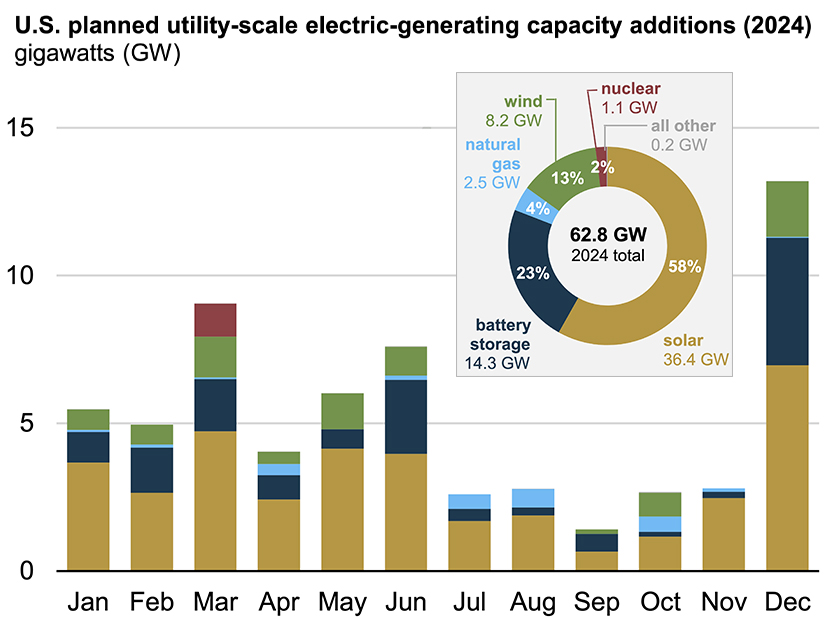Fossil Retirements to Slow Briefly as Solar and Storage Proliferate
EIA Update on US Power Generation in 2024 Shows Energy Transition Accelerating

EIA reports that solar and storage will dominate utility-scale capacity additions in the U.S. in 2024. | EIA
Feb 20, 2024
|
The U.S. Energy Information Administration reports that fossil fuel generation retirements will slow in 2024 and that solar and storage will dominate capacity additions.


